The Middle Passage

INTRODUCTION
DR. JOHN HENRICK CLARKE
Nowhere in the annals of history has a people experienced such a long and traumatic ordeal as Africans during the Atlantic slave trade. Over the nearly four centuries of the slave - which continued until the end of the Civil War - millions of African men, women, and children were savagely torn from their homeland, herded onto ships, and dispersed all over the so-called New World. Although there is no way to compute exactly how many people perished, it has been estimated that between thirty and sixty million Africans were subjected to this horrendous triangular trade system and that only one third-if that-of those people survived...
THE MIDDLE PASSAGE © TOM FEELINGS
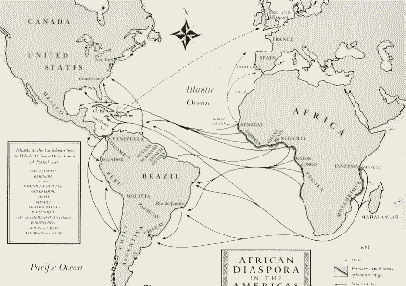
"...the average voyage took from five to twelve weeks."
The triangular trade system was so named because the ships embarked from European ports, stopped in Africa to gather the captives, after which they set out for the New World to deliver their human cargo, and then returned to the port of origin. The Middle Passage was that leg of the slave triangle that brought the human cargo from West Africa to North America, South America, and the Caribbean.
THE MIDDLE PASSAGE © TOM FEELINGS
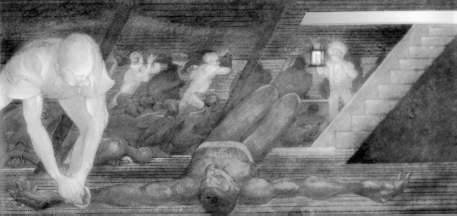
"Every morning, perhaps, more instances than one are found of the living and the dead fastened together."
John Newton - Slave Ship Captain
After several voyages, Newton quit the slave trade, became a minister, and wrote the hymn "Amazing Grace," with its autobiographical line "...that saved a wretch like me."
THE MIDDLE PASSAGE © TOM FEELINGS

'It was not atypical to see a massive school of sharks darting in and out of the wake of the ships filled with human cargo plying the Atlantic. For miles they followed the battered and moldy vessels, waiting to attack the disease-ravaged black bodies that were periodically tossed into the ocean...
If the Atlantic were to dry up, it would reveal a scattered pathway of human bones, African bones marking the various routes of the Middle Passage.'
THE MIDDLE PASSAGE © TOM FEELINGS
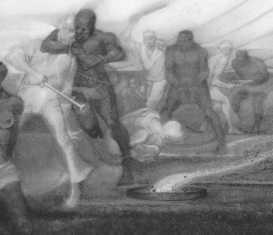
'There were successful uprisings in which the Africans gained control of the ships and were able to steer them back to their homeland.
A memorable mutiny was led by Joseph Cinque in 1839. Cinque and the other rebels killed the captain and took over the slaver Amistad. They were eventually captured and tried for murder and piracy on the high seas. However, in the end they were acquitted of all charges.'
THE MIDDLE PASSAGE © TOM FEELINGS
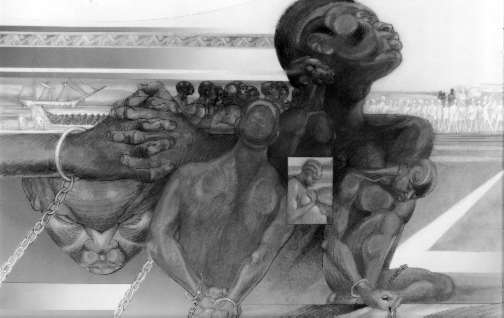
'Despite the miserable conditions, inadequate space and food, deadly diseases, and the violence from crew members, millions of African captives survived, demonstrating their strength and implacable will..'
'In humankind's shameful history of forced migrations, the journey of the Africans from their bountiful homeland to the slave markets of the New World is one of the most tragic.
THE MIDDLE PASSAGE © TOM FEELINGS
"But, if this part of our history could be told in such a way that those chains of the past, those shackles that physically bound us together against our wills could, in the telling, become spiritual links that willingly bind us together now and into the future - then that painful Middle Passage could become, ironically, a positive connecting line to all of us whether living inside or outside the continent of Africa..."
THE MIDDLE PASSAGE © TOM FEELINGS
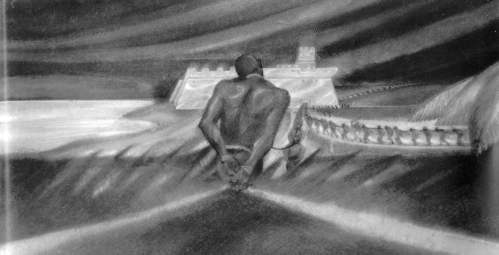
"One night while speaking with a Ghanaian friend,
he asked quite unexpectedly,
...what happened to all of you when you were taken away from here?
I knew instantly that he meant " what happened to all our people who were forcefully taken from Africa, enslaved, and scattered throughout the 'New World'?"
He was referring to this crossing called The Middle Passage.
THE MIDDLE PASSAGE © TOM FEELINGS
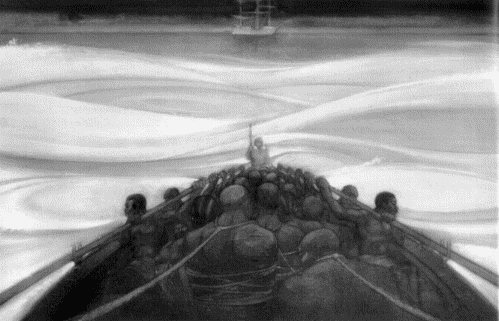
"As he continued to speak, muted images flashed across my mind. Pale white ships plunging forward into mountainous rising white foaming waves of cold water, surrounding and engulfing everything."
THE MIDDLE PASSAGE © TOM FEELINGS
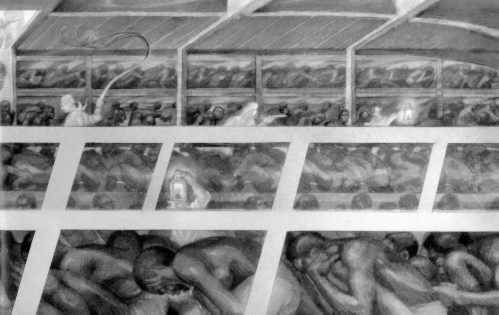
Our ancestors, hundreds of them locked in the belly of each of these ships, chained together like animals throughout the long voyage from Africa toward unknown destinations, millions dying from the awful conditions in the bowels of the filthy slave galleys.
THE MIDDLE PASSAGE © TOM FEELINGS
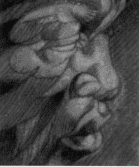
"Who could tell this story with any kind of balance?"
Enthusiastically, I started reading everything I could find on slavery and especially the Middle Passage. I searched out and wrote down all of the factual incidents in sequential order, reading some personal accounts by former slave-ship captains, slave traders, and various European historians.
I expected the descriptions of horror of the slave forts and inhumane treatment on the journey aboard the slave ships. But some of the writers' overbearing opinions, even religious rationalizations and arguments for the continuance of the slave trade made me feel, the more words I read, that I should try to tell this story with as few words as possible, if any.
Callous indifference or outright brutal characterizations of Africans are embedded in the language of the Western World. It is a language so infused with direct and indirect racism that it would be difficult, if not impossible, using this language in my book, to project anything black as positive.
This gave me a final reason for attempting to tell the story through art alone. I believe strongly that with a picture book any African in this world could pick up and see and feel what happened to us on those ships."
THE MIDDLE PASSAGE © TOM FEELINGS
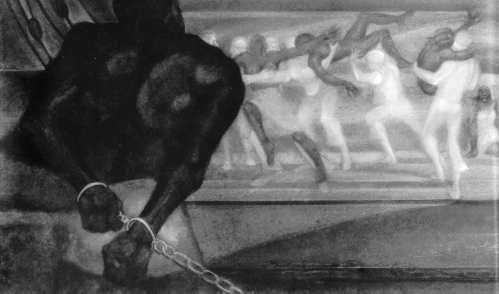
And as time went on, as painful as it was to force myself each time back into the agonizing past, it was equally as painful to come back through history, hoping for relief, only to see some of the same things in the present, in America, the richest country in the world...
THE MIDDLE PASSAGE © TOM FEELINGS
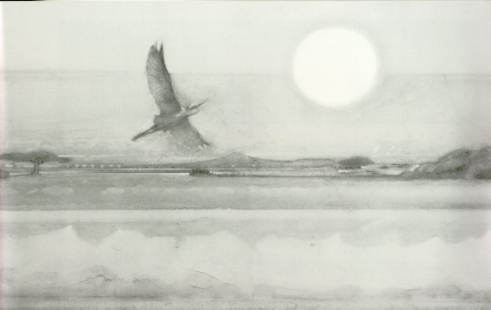
"It is almost twenty years later. I have finished this long 'psychological and spiritual journey back in order to move forward' with the completion of the last painting of the Middle Passage - story that has changed me forever. My struggle to tell this African story, to create this artwork as well as live creatively under any conditions and survive, as my ancestors did, embodies my particular heritage in this world. As the blues, jazz, and the spirituals teach, one must embrace all life, both its pain and joy, creatively. Knowing this is why I, we, may be disappointed, but never destroyed.
THE MIDDLE PASSAGE © TOM FEELINGS



